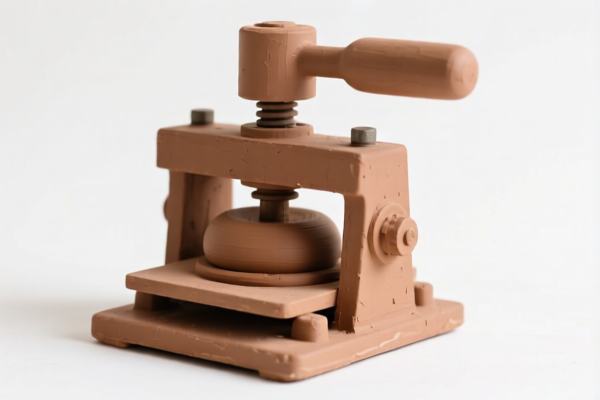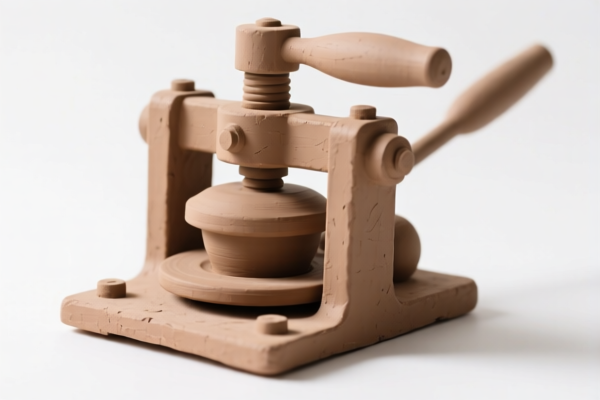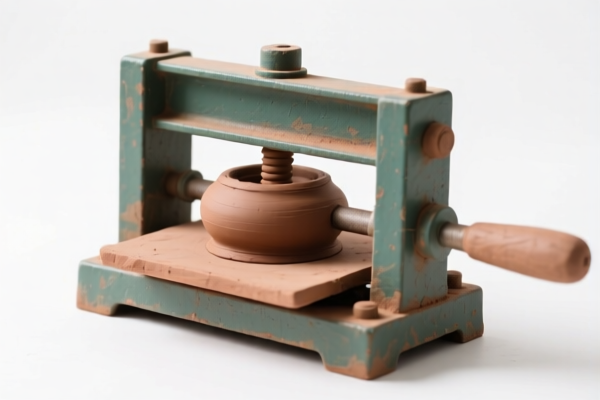| HS Code | Official Doc | Tariff Rate | Origin | Destination | Effective Date |
|---|---|---|---|---|---|
| 8474800010 | Doc | 55.0% | CN | US | 2025-05-12 |
| 8474800015 | Doc | 55.0% | CN | US | 2025-05-12 |
| 8485300000 | Doc | 57.5% | CN | US | 2025-05-12 |
| 8485800000 | Doc | 57.5% | CN | US | 2025-05-12 |
| 6914108000 | Doc | 64.0% | CN | US | 2025-05-12 |
| 6914908000 | Doc | 60.6% | CN | US | 2025-05-12 |
| 6909195095 | Doc | 59.0% | CN | US | 2025-05-12 |
| 6909195010 | Doc | 59.0% | CN | US | 2025-05-12 |




Clay Presser Machine
A clay presser machine, also known as a clay pressing machine or clay pug mill, is a device used to homogenize clay and remove air bubbles, resulting in a consistent, workable clay body. It is a crucial piece of equipment in ceramics studios, pottery production facilities, and brick manufacturing.
Material:
The machines are primarily constructed from steel, typically carbon steel for the frame and rollers, with varying grades of steel used for the auger (also called the worm) depending on the abrasiveness of the clay being processed. Some components may utilize cast iron for increased durability. Modern machines often incorporate stainless steel in areas that come into frequent contact with clay to prevent corrosion and contamination.
Purpose:
The primary purpose of a clay presser is to:
- Homogenize Clay: Blend different clay bodies together to achieve a uniform consistency.
- Remove Air Bubbles: Eliminate air pockets within the clay, which can cause explosions during firing.
- De-slug Clay: Break down and mix lumps of clay into a consistent mass.
- Increase Workability: Improve the plasticity and consistency of the clay, making it easier to shape and form.
- Recycle Clay: Reclaim and process scrap clay, reducing waste.
Function:
Clay presser machines operate through a combination of mechanical action. Clay is fed into a hopper and then forced through a series of rotating steel rollers and a screw-like auger. The rollers compress the clay, while the auger pushes it forward. This process kneads and compresses the clay, removing air bubbles and blending it thoroughly. The resulting clay is extruded as a continuous, dense, and homogenous strand.
Usage Scenarios:
- Pottery Studios: Used for preparing clay for wheel throwing, hand-building, and sculpture.
- Ceramic Tile Production: Essential for creating consistent clay bodies for tile manufacturing.
- Brick and Block Manufacturing: A vital step in preparing clay for extrusion or molding into bricks and blocks.
- Sculptural Work: Preparing clay for large-scale sculptures, ensuring structural integrity.
- Educational Institutions: Used in ceramics courses to teach clay preparation techniques.
Common Types:
- Manual Clay Pressers: Smaller, hand-operated machines suitable for small-scale operations. These typically require significant physical effort.
- Electric Clay Pressers (Pug Mills): The most common type, utilizing an electric motor to power the rollers and auger. These come in various sizes and capacities.
- Vacuum Pug Mills: Similar to electric pug mills but incorporate a vacuum system to more effectively remove air bubbles, resulting in a denser clay body.
- Continuous Pug Mills: Larger, industrial-scale machines designed for high-volume production, capable of processing clay continuously.
- Double Auger Pug Mills: Feature two augers for increased mixing efficiency and output.
The declared goods, a clay presser machine, fall under machinery used for processing earth, stone, ores, or other mineral substances. Here's a breakdown of relevant HS codes based on the provided information:
-
8474800010: This HS code covers machinery for sorting, screening, separating, washing, crushing, grinding, mixing or kneading earth, stone, ores or other mineral substances, in solid form; machinery for agglomerating, shaping or molding solid mineral fuels, ceramic paste, unhardened cements, plastering materials or other mineral products in powder or paste form; parts thereof – Other machinery for agglomerating, shaping or molding solid mineral fuels, ceramic paste, unhardened cements, plastering materials or other mineral products in powder or paste form: Designed for use with ceramic paste, unhardened cements and plastering materials. The machine's function of shaping ceramic paste aligns with this code. The total tax rate is 55.0% (0.0% basic tariff + 25.0% additional tariff, increasing to 30.0% after April 2, 2025).
-
8474800015: This HS code also covers machinery for sorting, screening, separating, washing, crushing, grinding, mixing or kneading earth, stone, ores or other mineral substances, in solid form; machinery for agglomerating, shaping or molding solid mineral fuels, ceramic paste, unhardened cements, plastering materials or other mineral products in powder or paste form; parts thereof – Other machinery for agglomerating, shaping or molding solid mineral fuels, ceramic paste, unhardened cements, plastering materials or other mineral products in powder or paste form: Other. If the machine doesn't specifically focus on ceramic paste, cements, or plastering materials, this code may be applicable. The total tax rate is 55.0% (0.0% basic tariff + 25.0% additional tariff, increasing to 30.0% after April 2, 2025).
It is important to determine whether the clay presser machine is specifically designed for ceramic paste, unhardened cements, and plastering materials to accurately classify it between HS code 8474800010 and 8474800015.
Customer Reviews
No reviews yet.